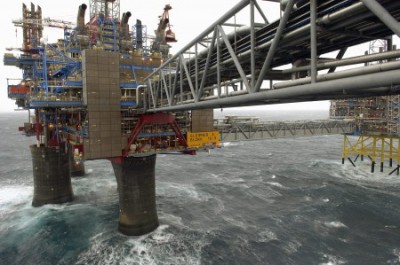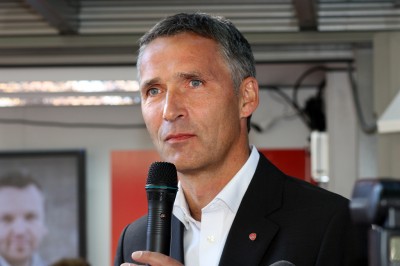As world leaders gather once again to tackle climate issues, this time in South Africa, comes confirmation that Norway’s oil and gas industry makes it among the world’s major polluters. Prime Minister Jens Stoltenberg has maintained a high climate-friendly profile, but now he’s “deeply worried” that any new emission-cutting agreement will be struck.

The CO2 emissions from Norway’s own industrial operations have long ranked Norway as one of the world’s biggest CO2 offenders per capita. The country’s small population of just under 5 million means its own emissions, especially from oil and gas production, are extremely high per resident.
Newspaper Aftenposten reported last week that now a new study from the Carnegie Institute in Washington and CICERO in Oslo shows Norway towering over other countries in terms of its CO2 emissions per capita: 149.3 tons per year per person compared to just 43.8 tons for the next-biggest offender, Australia. The numbers confirming and even boosting Norway’s dubious status as a major polluter and contributor to climate change are based on a new method of tracking the supply chain (external link) of polluting energy sources worldwide.
“Norway has a ‘green’ image because of its hydroelectric power, but inland emissions are multiplied 10 times when emissions from consumption of exported oil and gas are included in the accounts,” Glen Peters, a researcher at CICERO’s center for climate research, told Aftenposten.

That’s bad news for Stoltenberg and his left-center government coalition, which has worked hard to cut or offset carbon emissions elsewhere in the world but failed to do so at home. Now the pressure to protect industry and the jobs it creates during times of economic turbulence is higher than ever. Stoltenberg keeps promising emissions cuts at home, but his own labour interests are working against him.
Now Stoltenberg is also blaming the effects of the global finance and debt crises for his and other leaders’ failure to agree on a new climate deal to replace the pact struck in Kyoto that expires next year. The UN is gathering world leaders in Durban from this week through December 9, but most, including Stoltenberg now as well, are pessimistic there will be much progress on commitments to cut carbon emissions.
“There are positive things happening, not least with technology development and that more countries are implementing climate quotas and ceilings on their own emissions,” Stoltenberg told Aftenposten on Monday. “But there’s a very, very long way to go. I’m deeply worried.”
Stoltenberg said the finance and debt crises in the US and Europe are demanding so much attention from politicians that it’s undermining work on any climate agreements. This is also not a popular time to rein in industry, with even the Norwegian head of industrial firm Norsk Hydro warning Stoltenberg and his government last week against making any new demands for emissions cuts. Hydro’s boss said the expense of that would only move production from relatively environmentally friendly plants using hydroelectric power in Norway, for example, to cheaper plants in China that use coal. Total emissions will then rise.
The finance crisis is also making it even harder to raise the funds needed to pay for emissions cuts. Stoltenberg has been charged by the UN secretary general to help raise such funds, but has faced a tough business climate and public budgets with no capacity for any assistance.
Stoltenberg is setting off on more climate-related travel (ironic, given the impact that jet travel can have on emissions) over the next few weeks. He’ll be dining with German Chancellor Angela Merkel north of Berlin on Wednesday, taking part in a high-level meeting in Durban on December 7 and then making an official visit to Australia to draft climate, oil and gas, carbon capture and shipping cooperation. From there he’ll head for the South Pole, to mark the 100th anniversary of Norwegian Roald Amundsen’s arrival at the pole and to talk with researchers there studying global warming.
The burst of climate activity also comes as Norway itself is being clobbered by major storms, the sort of “extreme weather” that most climate researchers claim is a result of climate change brought on by carbon emissions. Meanwhile, Stoltenberg still faces the need to cut such embarrassingly high emissions at home and to finally release a report on climate measures in Norway, long delayed because of political disagreement. “Our goals stand,” Stoltenberg said. “More measures will come.”
Views and News from Norway/Nina Berglund
Please support our stories by clicking on the “Donate” button now:

